
The story of the sci-fi action-adventure series Star Contol is a long and complicated one.
Originally debuting in 1990 as a strategy game for MS-DOS and Commodore Amiga, it was the brainchild of a team headed up by the Toys For Bob co-founders Fred Ford and Paul Reiche III, and eventually spawned two sequels: 1992's Star Control II: The Ur-Quan Masters and 1996's Star Control III.
The first of these also featured Ford and Reiche III at the helm and placed more of an emphasis on the story and worldbuilding, with the introduction of adventure-esque dialogue screens that let players interact with all manner of aliens as they explored the galaxy as "The Captain" — a cave dweller with an unusual aptitude for computers. The ambitious follow-up went on to eclipse the success of the original and has regularly been lauded online as one of the best PC games ever made and a major influence on classic titles such as Fallout and Mass Effect. Star Control III, on the other hand, saw a brand new team taking over the project, with Ford and Reiche being too busy on other projects to reprise their roles.
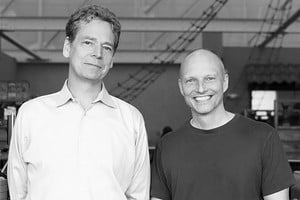
Since 1992, Ford and Reiche have been constantly thinking about what it would be like to develop their own sequel to the Ur-Quan Masters, and publicly announced their intention to make this dream a reality back in 2017. Following that, though, a public legal battle with the Star Control: Origins developer Stardock over the rights to the IP temporarily delayed the project and ultimately resulted in the company being unable to use the Star Control name (they can use pretty much everything else). As a result, Ford and Reiche have had to do some rebranding over the last couple of years, renaming their Star Control II remaster to Free Stars: The Ur-Quan Masters and the previously announced Star Control III: Ghosts of the Precursors to Free Stars: Children of Infinity.
After a long wait, Pistol Shrimp Games — a new company formed by Ford and Reiche, alongside Ford's brother Ken, and the former Toys For Bob employee Dan Gerstein — finally launched the Kickstarter for Children of Infinity last week, with the long-awaited sequel hitting its funding target of $100,000 in just 3 hours. So we decided to reach out to Ford and Gerstein to chat about this project and what new and returning players can expect from the upcoming title. You can read our conversation below:
Time Extension: I guess the best place to start here might be to just ask about Pistol Shrimp. How did the company form and how did this all come together?
Ford: That question probably goes mostly to me. So Paul and I have had a very long partnership, but most of it – pretty much after Ur-Quan Masters – was employed by various corporations – Crystal Dynamics and later Activision for quite some time. We did our time. And we got to a point in our lives where, ‘Hey, our lives are running out’. I guess everybody’s life is running out, but we were comfortable enough to leave Activision and try to do this again as kind of an independent developer. So we were on a plane at one point and we were picking from a bunch of different names that we came up with and Pistol Shrimp ticked our fancy because ‘Why would nature give a crustacean a gun?’
Time Extension: In terms of you Dan, how do you get involved in this? And how did you first meet Fred and Paul?
Gerstein: Oh, this could get to be a really long story. Be careful. I guess I’ll go for the abbreviated version, which is Paul and I had a mutual acquaintance. We didn’t know each other yet, but I was in high school at the time and I was getting ready to graduate. I had decided if I wanted to go to school, it was going to be art school. I loved digital art – that’s what I wanted to do – and our mutual acquaintance said, ‘Hey, you know, Paul might be looking for an intern. Would you be interested in something like that?’ And so, I said, ‘Sure, sounds like a good prospect. I was just going to community college. I’d love to get involved with some other stuff.

So I met Paul and Fred at Ming Yen, a Chinese restaurant in Novato, California while I was still in school, I think, and they probably couldn’t legally employ me. We met and talked about what Toys For Bob was about and what they were doing and I said, ‘Wow, that’s really cool.’ And they said, ‘Yeah, we’d love to have you join but we actually have no room in our office because we’re out of space, but we’re moving offices and when we move offices why don’t you come join us?’
So when I graduated, I took a part-time job delivering pizza and I started interning for Toys For Bob where I just showed up and started working on the Print Station computer. So if someone needed to print a document, they would actually have to stop my work. They would print and then I’d go back to work. So I was a humble art and animation intern and eventually lugging some of my own equipment to the office for probably a year while we were working on Disney Skate.
Ford: Yeah, all I know is we prevented him from getting his higher education.
Gerstein: Yeah, I dropped out of school. It was great.
Time Extension: What was your first impression of Paul & Fred?
Ford: He has to be careful here.
Gerstein: It’s not that I have to be careful. I have a memory for all kinds of things, but that’s one of the things that very rarely sticks in my mind. So I’m actually having to think about it. I remember Paul was very loquacious. That’s my strongest memory of him. And Fred was very silent --
Ford: — Yeah, I’m the silent partner. I’m introverted, so doing these one-on-ones is good, but I’m not good in a crowd.
Gerstein: I’ll lock him back in his cage when this is over.
Time Extension: Fred, what was it about you and Paul working together that has created such a good collaborative partnership? Have you put any thought into why your two personalities worked well together?
Ford: He’s a brilliant designer and it was fun and challenging to try and bring those designs to life with my programming. But simultaneously, my programming also opened up other vistas for his designs. So things he wouldn’t have thought he could do suddenly I would say ‘Well, you know, if you try this, you could maybe do this.’ So it was very much a mutual reinforcement of design and engineering and one of the things that we learned early on is the faster that loop can turn – the iteration loop – then the better things go.
If you don’t have a lot of feedback from the work you’ve been doing, then it’s really hard to stay motivated. So that’s been a mantra throughout our entire career. That feedback loop is critical to letting people [be] good at what they do. I would say this generally being an engineer but an engineer is not typically who you want to be designing your games. That’s because the designers have these crazy ideas and the engineers are tasked with pulling them back into something they can actually do. And so, all of our careers, we’ve tried really hard to remove the engineer from the process of designing.
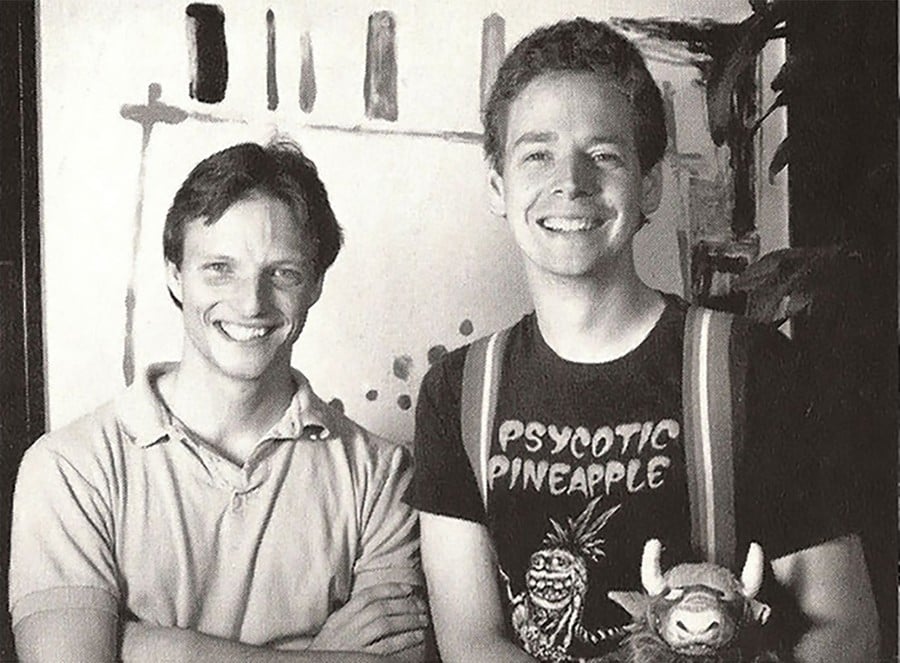
That’s so that the designer can go off and do a million horrible things that never see the light of day and never need to be told to the programmer, but that one thing that’s totally brilliant he can proudly show. And that’s sort of the way we’ve progressed over the years.
Time Extension: It would be interesting to hear how this new project came about because it’s been a long time in the making. There are interviews with you Fred back in the 90s where you mention wanting to work on a third game. Why did you decide to finally make it? And does it have any of that DNA of what you’ve been thinking about over the last 30 years? Or is it completely from scratch?
Ford: I liken this journey to the one that Odysseus went through, where our Trojan War was making Ur-Quan Masters and we set sail for home thinking we would be making a sequel in the not-so-distant future and then our careers kind of captured us on a whole bunch of different adventures. But the whole time we had been trying to get back to a place where we could do this again. And then, just in the last few years, we’ve finally sighted land.
The story for Paul has been brewing in his head for all of these years and I wouldn’t say that we thought of any particular technological things that we wanted to achieve, because I think most people would admit that the story of Ur-Quan Masters was the most important thing.
We’re trying to make something that beckons to the old fans as kind of a comfort food for them, but that is hopefully updated enough for modern sensibilities that new fans will latch onto it as well. Although keeping Ur-Quan Masters alive and open-source has kept the fanbase alive too. And new fans have found the Ur-Quan Masters, which I think is why our Kickstarter has been successful.
Time Extension: That’s something we wanted to ask — why turn to Kickstarter? Was that always the plan? Was there ever any consideration of trying to get investors and larger entities to back this?
Ford: Nothing was off the table. We did talk with some publishers and I imagine we might talk to some more. But first off, just the environment of the last few years with places going out of business, being bought by other places, etc, etc, hasn’t been a great environment for that.
Also, after all this time of not owning what we made before, we wanted to start owning our stuff and get to the place where at least, if we start having further conversations with publishers, we’re in a strong position there.
Time Extension: The original goal for the Kickstarter was just $100,000. Game budgets are often quite [hard to pin down], but that seems like a reasonably small amount for a game that has the ambition of being as large as the Ur-Quan Masters yet modernized. We’re wondering, how did you arrive at that amount and are you surprised by the success of the Kickstarter so far?
Ford: I’m just going to say, we’ve been working on this with a small team for 2-3 years now. That’s been mostly working on gameplay and verifying that we can create a large universe to explore and things to do. But we needed content creators to fill in that universe.
So we can build the universe, but we need it to look pretty, we need it to sound good, we need creatures that are fun to look at and fun to play with. So that’s kind of what the Kickstarter is for. And yeah, that $100,000 initial goal wasn’t what it cost us to get here, but what we thought we needed to finish it to a baseline quality. The stretch goals – hopefully when they’re met, if they’re met – will bring it even higher.
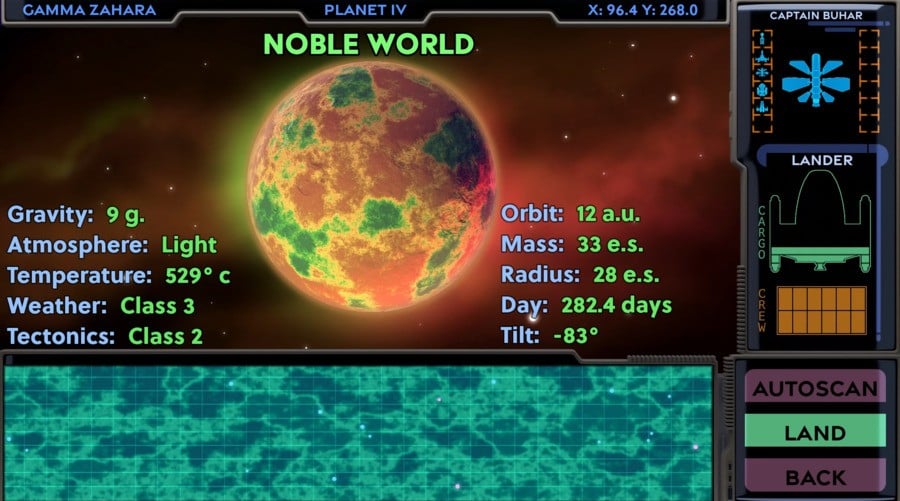
Gerstein: The thing that Fred said earlier is very true to us, which is the story is really the part that matters. We’ve had time to work on that and the gameplay is something that we’ve had time to work on – and we really feel good about that. We even have technology that’s going to allow people to play online. And those are the things that give us that kind of confidence.
Game budgets – you said it yourself – how can you even think about it? And we’re used to Activision budgets. A budget under 1 million dollars now for a game wouldn’t even be heard of at Activision, right? So this is a new universe; this is indie. And we’ve chosen an approach to doing things that will let us do it in a well-budgeted fashion. We’ve budgeted so we can tell the story we want to tell. If we can make it better, then we can make it better and that would be great, but we would rather have something that they can enjoy and have a memorable story with gameplay that they love and that the fans get to come back to.
A lot of modern games have shown you don’t need AAA budgets to do things. I’m not going to say people will forgive bad art, but you can do things in a way that is budgeted thoughtfully if you give them enough good things to connect with. And we feel confident about the good things that we do have. It’s just about, what’s the prettiest sheen we can add to it.
Ford: And it’s possible that some publisher may see where we are right now [and] maybe they’ll say, ‘Hey, we’ll pitch in a bunch of money to improve the quality of the final output too'. But we budgeted our Kickstarter to get to a place where we’re happy with what we'll deliver.
Time Extension: Dan, you obviosuly didn't work on the original Star Control games. What was your first impression of Star Control or Ur-Quan Masters? How did you first come across this series?
Gerstein: Yeah, that’s a great question. When I was a kid, I used to go to this place called the Onramp in Novato. I didn’t have access to a lot of computer software. I didn’t have a PC in my house until I was probably 14 or 15. But there was this wonderful place run by the wife of Robert Leyland who also worked for Toys For Bob.
At the Onramp, they had tons of computing equipment just lying around and games. I was a kid and I had a friend who was like, ‘You’ve got to come to this place and check it out.’ And I played this awesome 1v1 ship battling game. I was like, ‘This is so fun’, I had a favourite ship, and my friend and I spent hours playing that. And I thought that was a cool game and I loved it. And that’s where the phrase stuck in my mind.
So when I eventually actually joined up at Toys For Bob, somebody asked me, ‘Hey, did you play the Ur-Quan Masters? Did you play any other Toys For Bob games?’ I said, ‘Oh yeah, I loved that, the ship fighting was so cool.’ They said, ‘What did you think of the story?’ And I said, ‘What story?’ I didn’t even know there was a story. I was just a kid and we had so much fun playing the Super Melee mode that I didn’t know there was a story until I turned probably 21 or something and somebody asked me. I was totally confused, like ‘There was a story?’ Then yes, of course, I played it, and I had a lot of first impressions.
I’m in kind of a unique position that I didn’t have a nostalgic experience of the story of the Ur-Quan Masters. I experienced it very much as an adult and that gives me a different perspective on it, but I loved it. It was like, ‘This is timeless. This is amazing. I love this. You don’t need to have played this as a kid to love this. I would show this to anybody any age, anytime, right now.’
Time Extension: Before this game, there was obviously Star Control 3, which continued the story but without Paul & Fred’s involvement and that has its own take on what happened after Ur-Quan Masters. I’m wondering, how does Free Stars tie into Ur-Quan Masters? What can people expect from the story? And what can you reveal about it?
Gerstein: One of the most important things for picking up off that story is that the game had a long universe, but short stories. There are lots of short, memorable stories that people had in that universe. There are encounters with different aliens, there are things that start and end. Nowadays we have phrases for them like “side quests” but back then it was just the story of the game.
So one thing that I’m excited about and that feels like a continuation of the universe for that story is you’re back in the character’s shoes again – and there are a lot of expectations about what that character is going to do. Internally, we sometimes use the phrase “Be the Captain!” and it’s very important that you have that same agency. So think like classic Buck Rogers.
You’re not a goon in a military or something, you are the captain and you are a hero and it’s your mission to go explore, discover, and make contact. And it’s that fantasy of you’ve learned a lot from the original game, you’ve met new aliens, you know the world, you know what the Ur-Quan was like, so the big story I know that I would be thinking about is, ‘Okay, we’ve just defeated the Sa-Matra, now what’s happened? How has that changed all of these stories?’ So that’s part of what we’re excited to explore there.
But then, circling back to that first part, the game was about exploration and about finding those stories and meeting new characters. So we’re really excited to take that same spirit and say, 'Yes, we are taking some of our characters along with us, but they’re new characters and a whole new region of space that players are going to explore and feel like it’s Christmas morning again'. That is a big aspect of what makes the story fun for us.
Time Extension: A big problem with coming back to an old game that's so beloved is how you approach the art. You mentioned previously you want Free Stars: Children of Infinity to appeal to new players but also serve returning players as well. What kind of considerations have gone into selecting this art style that you’ve been showing off in the Kickstarter materials?
Gerstein: Back when Ur-Quan Masters came out, nobody had heard the phrase “pixel art”, so there were so many directions that we could have gone. It’s such a good question because what are the considerations? I’m trying to think — how do we compress the many years of thoughts and experiments that we’ve put into this into something pithy and thoughtful?
Ford: Let me start with what one really practical thing was and then you can continue from there. We started as a super small team – none of us being artists. So with a super small team and with none of us being artists, you can’t do something that’s AAA. You can’t start there, with ‘This is what I’m going to do’ because our team size needs to blow up to do that and we needed to stay small and agile at the beginning.

Gerstein: Yeah, so the true answer is while we dabbled and explored. We didn’t really develop it until recently because we were focused on proving our technology, our designs, our story, our gameplay, and those things. We didn’t really start working with contract artists until very, very recently and that’s after we gathered funds from Patreon.
I guess our considerations for the game not only are budgetary but we want someone to see old characters they remember like the Ur-Quan and say, ‘I know that character. I’ve met that character before. It looks like them.’ We have a lot more pixels to fill now but being 2D was very intentional. Not just for budget but because we love the handmade style and it feels like doing anything else would get too far away from that.
I guess our considerations for the game not only are budgetary but we want someone to see old characters they remember like the Ur-Quan and say, ‘I know that character. I’ve met that character before. It looks like them.’ We have a lot more pixels to fill now but being 2D was very intentional.
So especially for the conversations with aliens, we wanted them to be done in 2D. You know, we’ve done everything from 2D to 3D [and] we’ve played with different animation solutions. We’ve played with a little bit of rigged 2D animation with technology like DragonBones and SPINE and [classic-style] flipbook animations — just the way it was done before, but modernized. The only hard part about that is there are a lot more pixels to fill and it can take longer, so the budget is harder there.
For the ships and our gameplay world, the gameplay is all still two-dimensional, but we have a little bit more freedom there. And reimagining what the planetside might look like is really helped by a 3D workflow because by being 3D, we can do things that the Ur-Quan Masters never did, like show characters turning. So there’s kind of gameplay considerations there. We’d like to have planetside where you can appreciate and express a turret-like creature that can turn. With the pixel art, that would have looked different and it would have been harder.
A common question we do get is, ‘Why didn’t you retain the pixel style? It’s so cool. There are so many games that do pixel art.’ And that’s true. But, for ship combat, because we now have smooth turning for our ships, it would have been very difficult to express that and have that feel really good with pixel art. So we have a kind of pseudo-3D ship workflow that retains – we hope – some of the charm […] but lets us have the more modern gameplay.
Ford: Also, one of the things that was important to us was Ur-Quan Masters was very colourful and pulpy, as opposed to the grey and brown that a lot of space games turn into. So it was important for us to maintain that color, which is hard to do in full-on 3D.
Gerstein: Especially when it gets to things like animation. Nothing feels exactly like, ‘Oh, it was a hand-painted frame of animation.’
Time Extension: A big thing that Dan mentioned in the Kickstarter video is that in terms of the tools that you’re using, it’s either your own custom tools or open-source software. What was the thinking going into that?
Ford: I’ve had a vision for at least the designing of gameplay for probably about 10 years. It was mostly in my head because I was working for Activision as a studio head, and so I couldn’t really execute on that. But going independent again allowed me the opportunity to follow my vision. I don’t know how deep you want me to get into that because it’s probably not that interesting.
Time Extension: You could try us. We’d be happy to hear more.
Ford: I’ll tell you what, I’ll let Dan take it from here a little bit because the technology is built for someone like him.
Gerstein: Yeah, it is made for designers. I just want to briefly address the other half of your question too, because when we started working with Fred’s technology as a springboard, it was important to us and we had this conversation internally, and this is when [Fred's brother] Ken was involved too.

Ken started building what we call a viewer – you’ll understand this more in a moment – in SDL. And we were making our own homebrew pretty much everything. Of course, we still used libraries and things that made sense and we built it with C++ — we didn’t create that. But it was important to us to maintain our ability to control our future. Because we had in our minds that Ur-Quan Masters is open-source. We don’t want to do something where we couldn’t do that again. We don’t want to make something that would restrict modding and the players’ ability to enjoy it and let us decide what to do with it, because a big part of having worked for Activision all this time – and working with publishers – is you never really own everything. So working with a product that we would have to license was something that we were thoughtful about avoiding – or trying to avoid. I’m glad we succeeded.
But, to the technology that we’re building, it’s called Simple and it’s a meta-joke. The way it works is very hard to describe, but it is a technology that lets a designer — like me or maybe someone more junior — who maybe doesn’t know as much about programming […] or who maybe finds programming languages either confounding or difficult, make multiplayer gameplay without getting stuck in the not-so-fun parts of programming like typos and all that other stuff.
So everything looks like text – it’s code – but you author it visually. So you author it with a mouse and by typing things. It tries to let people who aren’t technically sophisticated be able to prototype and experiment with things. The other crucial part of it is we only use it for gameplay.
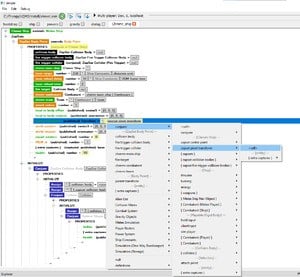
Now solving multiplayer, even if that’s all it did, would be really cool. But the way it works is it is just for gameplay, which means things like physics, collisions, and properties. Then there’s the viewer.
So the viewer looks at what is going on in the simulations – those are the levels you can think of in Simple – and decides I will render this to an observer in a certain way. So all of the sound, all the graphics, all of the audio-visual niceties, the user interface, all of that happens in the viewer. Simple is just there running the simulation. It has no idea what the viewer is doing and what a player might be seeing – it’s just there to help manage gameplay and all it does for networking is pass input back and forth. So, as long as the viewer can resolve my controller is being pushed up and pass that along, that’s all Simple cares about. It’s like, ‘Okay, I better tell the other players this player is pushing up’. I’m giving a very simplified view of it. I’m sorry, that’s a lot!
Ford: [In other words] it’s not another game engine like Unity. It’s a little lower level than that. It’s a place to create your gameplay, and then you would use something like Unity to sniff the gameplay, make graphics and sound, and do everything that the gamer sees and feels. But all of the clients are using the same gameplay kernel. So that means we can run networked with any device that is running that kernel. So you might have a phone version and as long as it is running that gameplay kernel, you can make the UI different, you can make the sounds different, you can make everything that is expressed to the client different but fitting for that particular device. And because there’s no server involved, the gameplay-making environment is multiplayer out-of-the-box always, for anybody who wants to use it.
Gerstein: We better say it uses rollback technology because fighting game enthusiasts really like that phrase, and I want to make sure we get that in there. It does use rollback technology.
Time Extension: Before you mentioned new characters and aliens. Is there anything that you can reveal in terms of a favourite new species that you’ve been developing?
Gerstein: We can’t pick! That’s like asking us to pick a favourite child!
Time Extension: Well, in that case, maybe you could talk about some of the reference points for the science fiction here. Is the sci-fi that you’re drawing from, still the same as what Paul and Fred were pulling from back in the '90s? Or are there any modern sci-fi influences that you’re looking at as well?
Ford: I’d say that a big influence who has remained a big influence was Jack Vance – kind of a science fiction writer from the 50s, 60s, 70s. He passed away probably 10-15 years ago, but he just had a very unique and timeless style, and that is something that we tried to emulate with Ur-Quan Masters and we’re hoping to pull from again with Children of Infinity.
Gerstein: Yeah, we’re all big readers and science fiction has gone on, and stories have continued to be written. So there are lots of new things that we might pull inspiration from, but there’s also that timeless “pulp sci-fi” or golden-age science fiction — [stories where] there is the idea that there is this hope for the future.

So if you read some Vance, it is timeless. I think Fred even described it that it is mostly fiction and then the science fiction is just there to support the fiction and the story and the characters --
Ford: Yeah, it’s not hard science fiction, which is part of what makes it timeless. He doesn’t go into great detail explaining some technology which five years from now you’ll read and say, ‘This is stupid’ or ‘That’s never going to happen’.
Gerstein: Instead, he’ll explain a society. He’ll explain a culture, you know. You’d see some parallels if you read some Jack Vance.
Time Extension: This next question is for you, Fred. And this is probably a question to test how much you still play games because we know that once you’ve been in the position of studio head, there’s a potential to stop playing new games as much as you might want to. What sci-fi games over the last 20 years have stood out to you and inspired you in your approach to this latest project?
Ford: Well, I don’t get to play games much. I suppose I could try to make time to do it, but I much prefer to make them. I mean, I loved the original X-COM when we were doing Ur-Quan Masters, so I played quite a bit of the remake from 10 years ago or whatever and that was instructive in how you might update a game that was 2D-pixel art back then but is now 3D and high-production values in this day and age. I thought they did a really good job of threading that needle.

Time Extension: To throw it over to you Dan, are there any modern sci-fi games that you’re particularly influenced by?
Gerstein: I’m the opposite of Fred, I wish I had more time to play games because I love them. I’ll give it back to you as a curveball. It isn’t meant as a curveball, but it’s just true and honest.
I like touching everything. I get so much from very different games and so the cheeky answer to this – and this is true – is when I first joined with Pistol Shrimp I sat down and played the Ur-Quan Masters a lot. It’s been a big influence on me because I only experienced it in a limited fashion when I was younger. And you know, it was getting to play that, and going, ‘This is very fresh in my mind I want to follow this up’. That was really part of the experience.
In terms of games that I’ve been playing recently — this isn’t science-fiction but it draws a lot of parallels — I was very inspired when I started thinking about Spiritfarer. Because that game is very similar to the Ur-Quan Masters. You have a map, you explore, you create relationships, you meet these memorable characters – and you only get one. You don’t meet their whole civilization or anything. And so, it’s that experience of a container and a universe for stories that can start and end but still has a throughline through it. Part of my job making games is to criticize them, but a lot of what works for me is pulling the best parts of things that I love from other games.
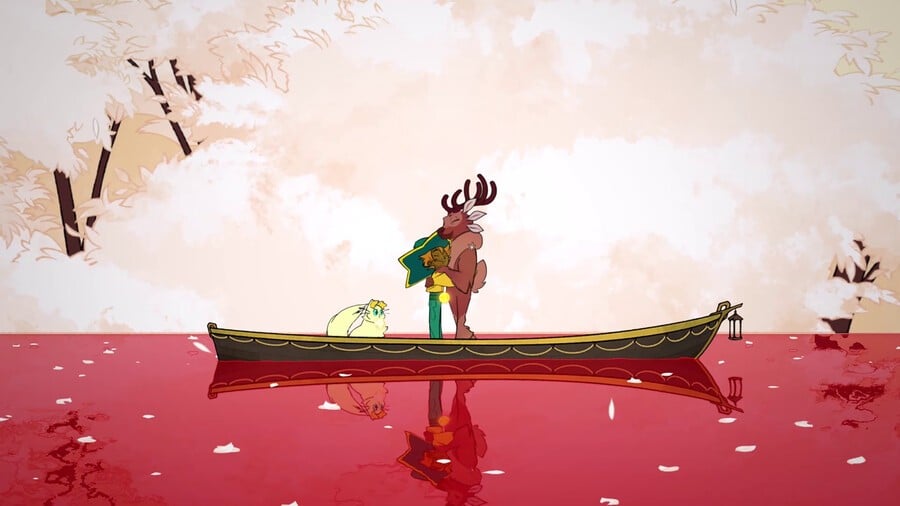
Another one also is oddly Factorio. What is the story of Factorio? You don’t really get a lot but you do get some. And so, I sat down with Paul and I actually forced him to do this. I forced Paul down and said, ‘Paul, we’re playing Factorio together’ because one of the things I’m excited about in this game is having cooperative play.
So I said, ‘We’re going to play Factorio together and we’re going to have a story about what this is like.’ Factorio is a science-fiction game – there are these alien bugs and you crash your spaceship — but it was about talking about those experiences of, ‘This is what it was like for you to go off and have an adventure and for me to go off and have an adventure’, even though it’s a builder game with very little text. That was a big influence early on for us when we got going. I think those are the two I would name.
Time Extension: Thank you both for your time! And congrats on the success with your Kickstarter. We look forward to hearing more.
